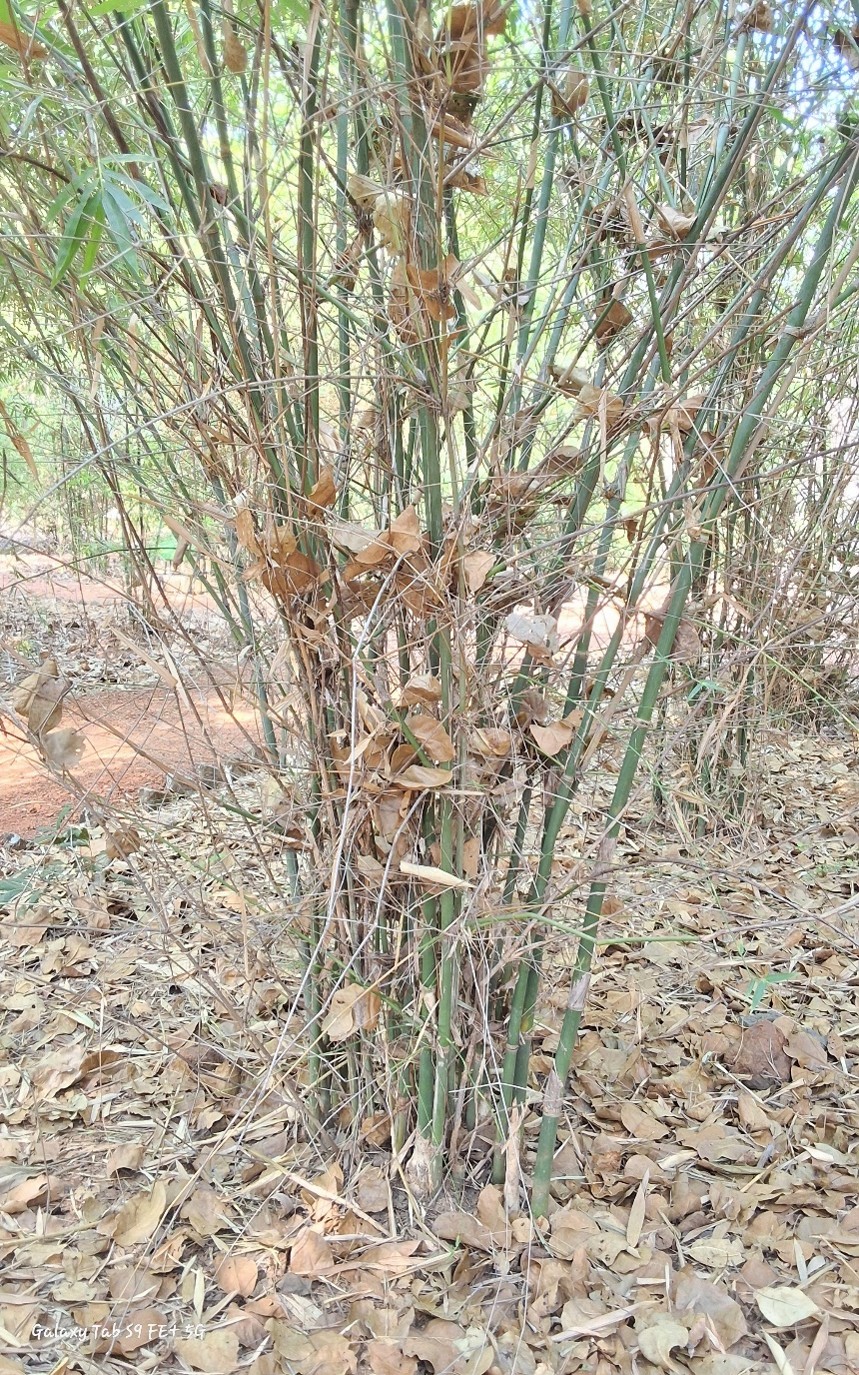Bambusa tulda

Bambusa tulda
Bambusa tulda also known as Tulda Bamboo or Tuldai Bamboo, is a clumping bamboo species primarily native to India, especially in the eastern and northeastern states such as Assam, West Bengal, Odisha, and Bihar. It is also cultivated in various tropical regions for commercial purposes. Found at altitudes ranging from 600 to 1200 meters, Bambusa tulda prefers well-drained, fertile loamy soils but can tolerate other soil types. The species thrives in regions with a rainfall range of 1500–2500 mm annually, typically growing in moist, deciduous forests, riverbanks, and hilly terrains.
The culms of Bambusa tulda are erect and dense, reaching a height of 12 to 15 meters and a diameter of 8 to 12 cm. The culms start off green and darken with age. The internodes are 30 to 45 cm long, and the culm sheaths are initially green, turning pale yellow or brown as they mature. The adaxial surface of the culm sheath is smooth and glabrous, while the abaxial surface is slightly hairy, and the margin features soft bristles.
The leaves of Bambusa tulda are oblong-lanceolate, with acutely pointed tips. The leaves measure 15 to 30 cm in length and 2.5 to 5 cm in breadth. The inflorescence of Bambusa tulda consists of a large panicle with spicate branching. The empty glumes are ovate, acute, and faintly nerved, while the flowering glumes are similar but larger, with ciliate edges. The stamens are exserted, the anthers are glabrous, and the style has fine hairs. Flowering occurs rarely and in gregarious cycles, typically every 30 to 50 years, and has been observed in parts of India, particularly in Assam and West Bengal. The seeds are small and have low germination rates, which leads to propagation through vegetative methods such as clump division, offsets, culm cuttings, and tissue culture.
Bambusa tulda is widely used in various applications, including construction for scaffolding, poles, furniture, and building materials. It is also used in the production of paper and pulp, fencing, and as boundary markers. In some regions, the edible shoots are harvested, and the bamboo is utilized for craftwork such as making baskets and mats. Additionally, it is valuable in soil erosion control due to its strong root system.
Listen Audio:
Need assistance? BRTC Faculty